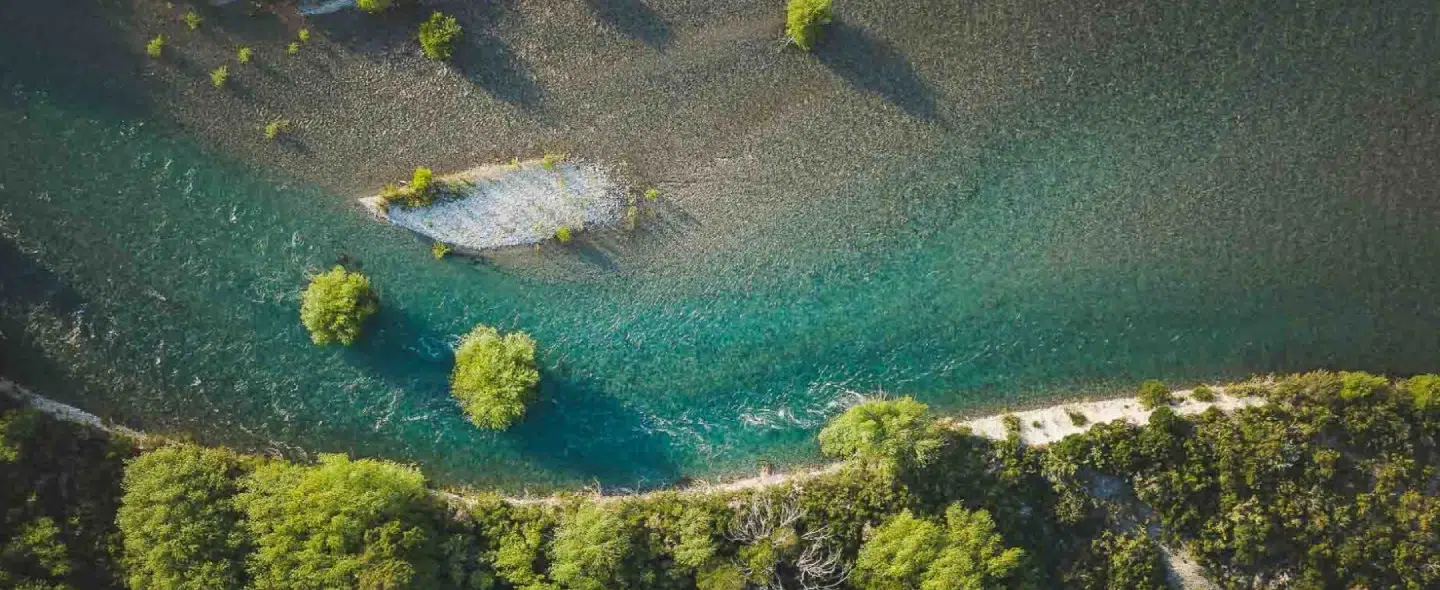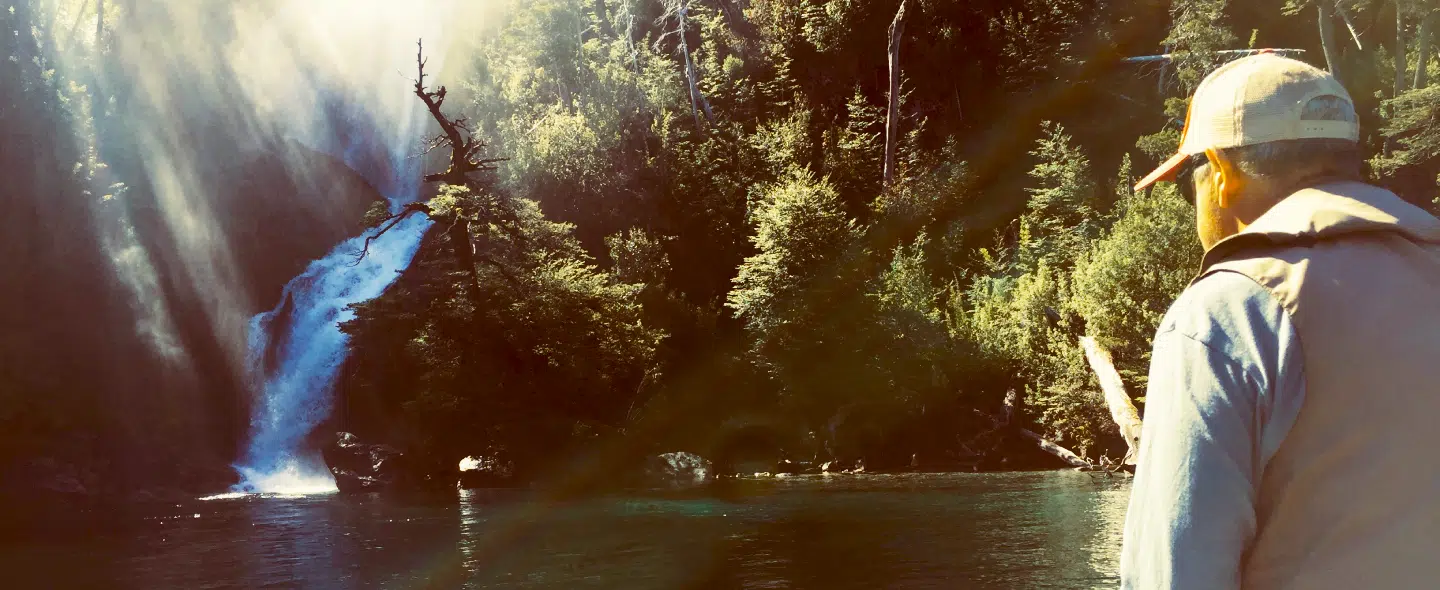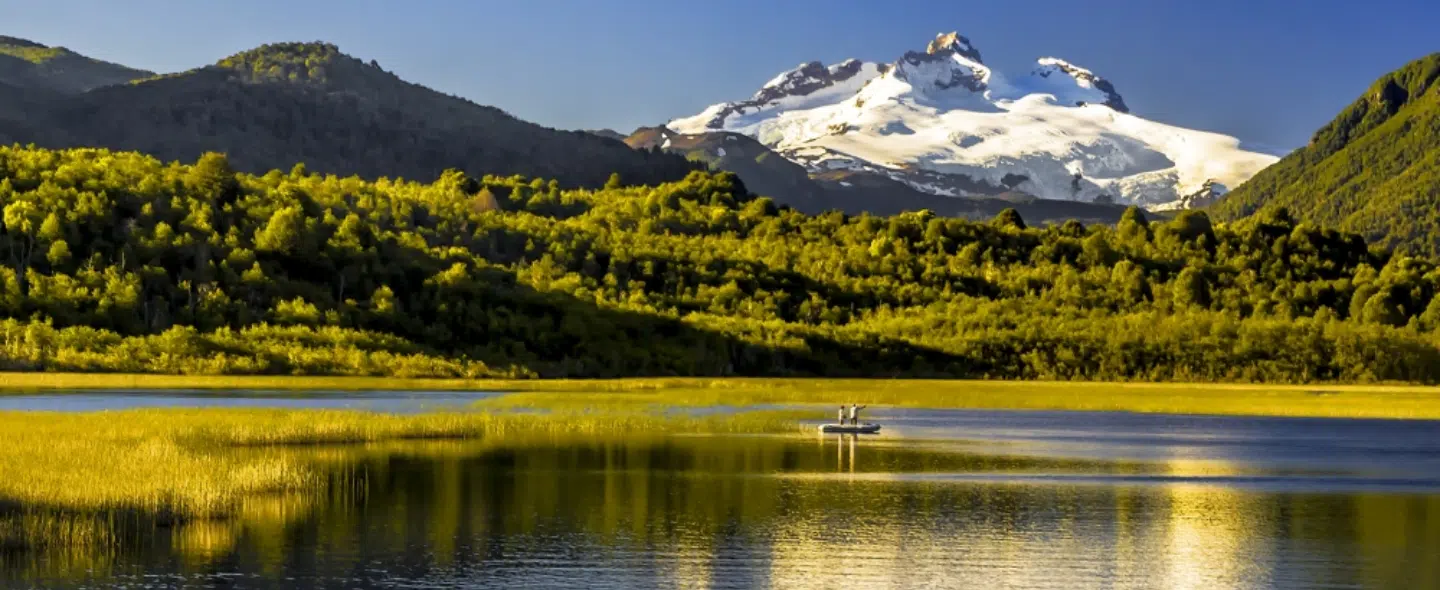Limay River Camp
Camp Expeditions
$640/Per Angler Per Day
Manso River Camp
Camp Expeditions
$580/Angler Per Day
Fonck & Roca Lakes
Nahuel Huapi National Park, Argentina
November 1st through May 1st (best in Summer)
National fishing permit, Private/local permission, Requires qualified guide
Remote Jewels of the Manso Basin
Set deep in the heart of Nahuel Huapi National Park, Lakes Fonck and Roca are remote, pristine waters with notoriously difficult access. Reaching them feels like a small expedition in itself.
Fishing these lakes requires either a motor boat or a catarraft, as their tree-lined shores and countless fallen logs make wading virtually impossible. In spring, conditions are excellent, and for those chasing big browns, the best strategy is to work sinking lines and large streamers along the submerged logs—territory the fish defend fiercely. Personally, I love to drift the banks by boat, scanning for rising fish.
Landscape and Characteristics
Both Lake Fonck and Lake Roca share the defining traits of the Manso Basin’s glacial lakes: medium-sized waters encircled by lush vegetation, with difficult access that helps preserve the quality of the fishery. Rainbow and brook trout are the main residents, with occasional brown trout showing up in excellent size. Their wild, varied shorelines—from dense reed beds to heavily forested margins—make a boat almost essential for anglers.
Because of their remote location, farther from Bariloche than most other lakes, Fonck and Roca often deliver more consistent fishing. Depending on the season and prevailing conditions, one lake may be favored over the other to maximize success.
Lake Fonck stretches long and narrow, divided into two distinct basins: Fonck Chico, ringed by thick reeds and only fishable by boat, and Fonck Grande, which features a more varied shoreline with reed beds, rocky cliffs, submerged vegetation, and the inflows of two productive streams—the Calote and the Frío.
Lake Roca, meanwhile, is edged by dense coihue forests and abundant aquatic vegetation. It is fed by three streams—Expedicionarios, Linco, and Felipe—which create a variety of promising fishing situations and habitat.
Map of the Basin
Below you’ll find a map showcasing the most renowned spots of both lakes. Explore freely and don’t hesitate to ask questions—we love sharing stories about these extraordinary lakes.
Fishing these lakes
November – Season Opening
At the start of the fishing season, water levels are high and temperatures remain low in both lakes. Trout—especially rainbows—are recovering from spawning and feeding aggressively. This is the time for streamers and nymphs on sinking lines, which match the high-water conditions perfectly. Both lakes have small tributaries, giving excellent opportunities for fishing.
December / January – Crème de la Crème
With summer’s arrival, warmer weather triggers aquatic life, and fish feed more actively near the surface. By late December, the famous dragonfly hatch begins—one of the most thrilling fishing experiences in Nahuel Huapi National Park. Big foam flies bring explosive strikes, offering unforgettable action. Early January continues in much the same way. These months are also ideal for our camps: perfect weather and world-class fishing—simply unmissable.
Late January / February – Patience Pays Off
As the season moves into late January and February, lower water levels and rising temperatures make fishing more technical. Anglers often switch to fast-sinking lines and small streamers, while evening caddis hatches still bring rewarding dry-fly opportunities. Here, patience and precision are the keys to success.
March / April – A Good Finish
As autumn approaches, conditions stabilize, and fishing once again improves. This is a versatile period where all techniques—dries, nymphs, and streamers—can produce excellent results, closing the season on a high note.




